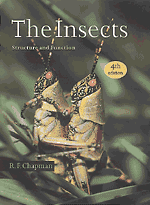Book contents
- Frontmatter
- Contents
- Preface
- Acknowledgments
- PART I The Head, Ingestion, Utilization and Distribution of Food
- PART II The Thorax and Locomotion
- PART III The Abdomen, Reproduction and Development
- 11 Abdomen
- 12 Reproductive system: male
- 13 Reproductive system: female
- 14 The egg and embryology
- 15 Postembryonic development
- PART IV The Integument, Gas Exchange and Homeostasis
- PART V Communication
- Taxonomic index
- Subject index
15 - Postembryonic development
Published online by Cambridge University Press: 05 June 2012
- Frontmatter
- Contents
- Preface
- Acknowledgments
- PART I The Head, Ingestion, Utilization and Distribution of Food
- PART II The Thorax and Locomotion
- PART III The Abdomen, Reproduction and Development
- 11 Abdomen
- 12 Reproductive system: male
- 13 Reproductive system: female
- 14 The egg and embryology
- 15 Postembryonic development
- PART IV The Integument, Gas Exchange and Homeostasis
- PART V Communication
- Taxonomic index
- Subject index
Summary
HATCHING
Mechanisms of hatching
Most insects force their way out of the egg by exerting pressure against the inside of the shell. The insect increases its volume by swallowing the extra-embryonic fluid and in some cases by swallowing air which diffuses through the shell. Then, waves of muscular contraction pump hemolymph forwards so that the head and thoracic regions are pressed tightly against the inside of the shell. In grasshoppers, and perhaps in other insects, these muscular waves are interrupted periodically by a simultaneous contraction of the abdominal segments which causes a sudden increase in pressure in the anterior region. The dorsal membrane of the neck in grasshoppers has a pair of lobes, the cervical ampullae, which are inflated by the increase in hemolymph pressure (Fig. 15.1a). They serve to focus the pressure on a limited area of the shell. If the shell does not split, the ampullae are withdrawn and a further series of posterior to anterior waves of contraction follows ending with another sudden abdominal contraction. One of these sudden contractions ultimately ruptures the shell.
The position of the rupture generally depends on where the insect puts pressure on the chorion. In grasshoppers, the chorion is split transversely above the ampullae; in the water beetle, Agabus, the split is longitudinal, while in some species it is variable in position. The chorion of some species has a line of weakness along which it splits (section 14.1.1.3).
- Type
- Chapter
- Information
- The InsectsStructure and Function, pp. 363 - 412Publisher: Cambridge University PressPrint publication year: 1998
- 2
- Cited by



